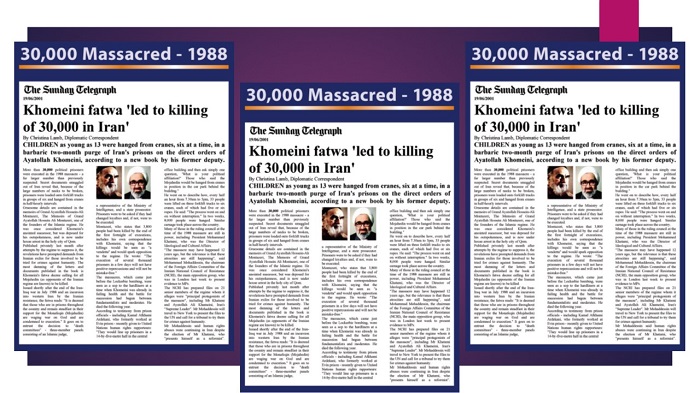The 1988 massacre of 30,000 political prisoners, most of whom were affiliated with the main Iranian opposition movement, the People’s Mujahedin of Iran (PMOI / MEK Iran).
International human rights organizations
International human rights organizations have called this massacre the greatest case of “crimes against humanity” since World War II.
The eyewitness accounts will reveal the barbarity of the Iranian regime in harrowing detail. At the same time, these testimonials will vividly demonstrate a generation’s unbreakable resolve to neither abandon their ideals nor submit to the hated mullahs despite the heavy cost.
Even after 33 years, families of the victims have not received death certificates or information on the manner in which their loved ones were murdered or what was done with their bodies.
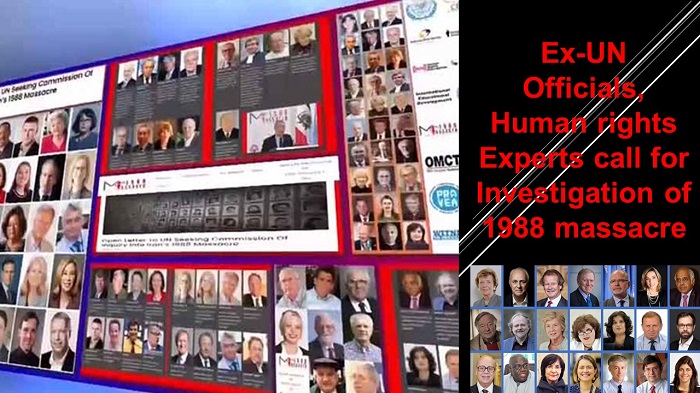
1988 fatwa issued by Ruhollah Khomeini
These prisoners—none of whom had been sentenced to death—were executed based on a 1988 fatwa issued by the then-supreme leader Ruhollah Khomeini.
“As the treacherous Monafeqin [Mojahedin] do not believe in Islam and what they say is out of deception and hypocrisy… and as they are waging war on God …. and as they are tied to the World Arrogance, and in light of their cowardly blows to the Islamic Republic since its inception, it is decreed that those who are in prisons throughout the country and remain steadfast in their support for the Monafeqin (Hypocrites) [Mojahedin (MEK)], are waging war on God and are condemned to execution,” Khomeini wrote. He urged the regime to carry out his order with “no mercy.”
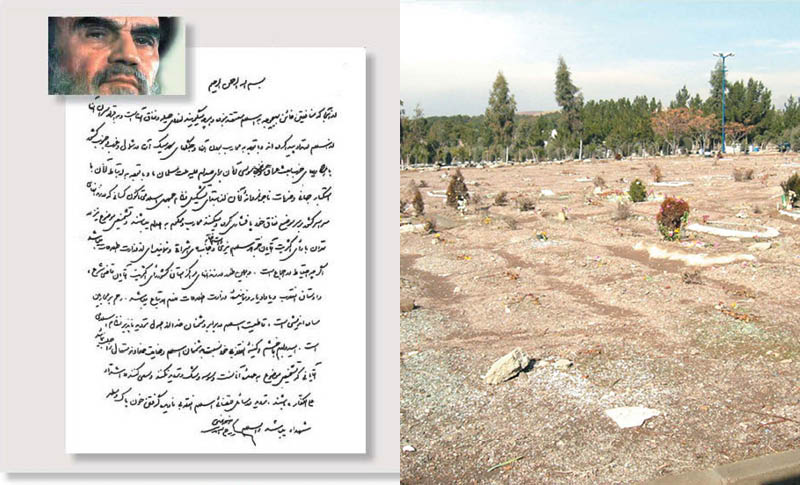
The “Death commissions”
“Death commissions,” were established in every province to identify prisoners who were suspected of remaining steadfast in their allegiance to the MEK and its ideals of a free, democratic Iran with a duly elected, secular government.
Tens of thousands of prisoners from Evin and Gohardasht prisons were brought before these “death commissions” and usually had their fates determined in just a few minutes. In one case, a 28-year-old man named Mahmoud was brought before a death squad around 7:00 p.m. on July 30, 1988, according to a witness. Mahmoud said he told the death commission “I am a supporter of the MEK.” Around 9:00 p.m., he and a large number of other prisoners were taken to the “death corridor,” where they were lined up and led into execution halls. Mahmoud was hanged that night.
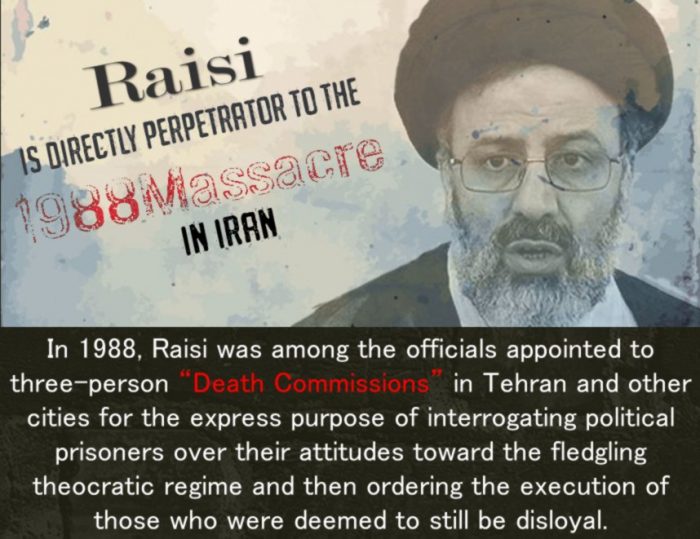
Hamid Noury, a former assistant prosecutor
Hamid Noury, a former assistant prosecutor in Iran, is now in Sweden facing criminal charges for his role in the 1988 “killing machine.”
Many of Iran’s current senior officials were also part of the 1988 massacre, according to witnesses. These include Iran’s new President Ebrahim Raisi, who was a member of the Commission in Tehran in 1988; prominent Sharia Judge Hossein Ali Nayyeri; Tehran Prosecutor Morteza Eshraqi; Deputy Minister of Intelligence Mostafa Pour-Mohammadi; and several criminal mullahs such as Ali Mobasheri, Mohammad Moghesiye, Esmail Shushtari, and Ali Razini.
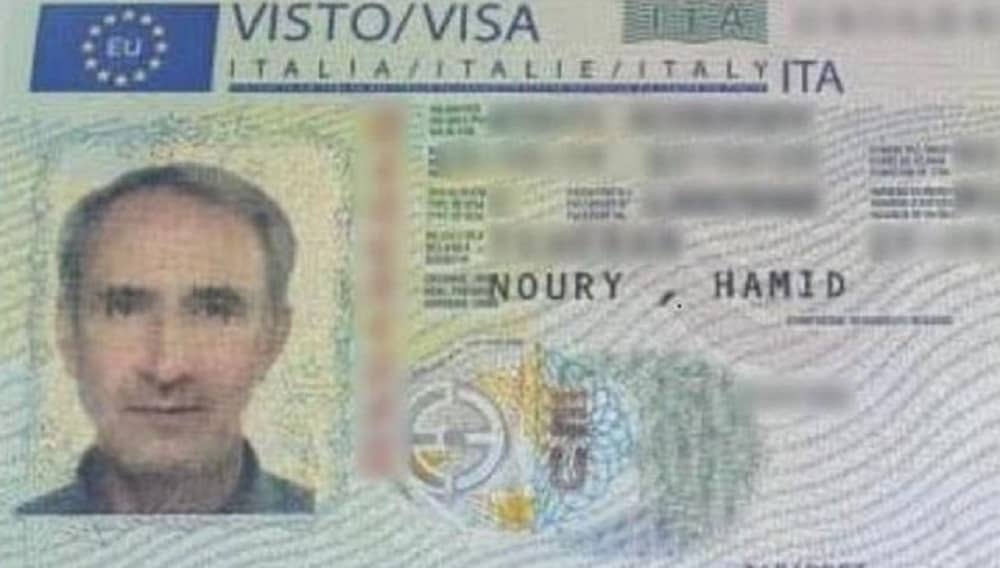
Eyewitness Accounts Asghar Mehdizadeh
I am Asghar Mehdizadeh, born in 1957 in the city of Soomehsara I was in Soomehsara, Fooman, Rasht, Evin, and Gohardasht prisons for 13 years.
I was arrested in Tehran in early 1982, along with MEK supporter Mohsen. Mohsen was martyred under torture because he always defended the aspirations of the MEK.
While I was under interrogation, I saw many brothers and sisters who were martyred under torture.
I then had my interrogation continued in solitary confinement in Gohardasht. After spending a year and a half there, many prisoners, including Farhad Komayi, who was my superior and was very much loved by the people of Soomehsara, were executed. I was sentenced to 15 years.
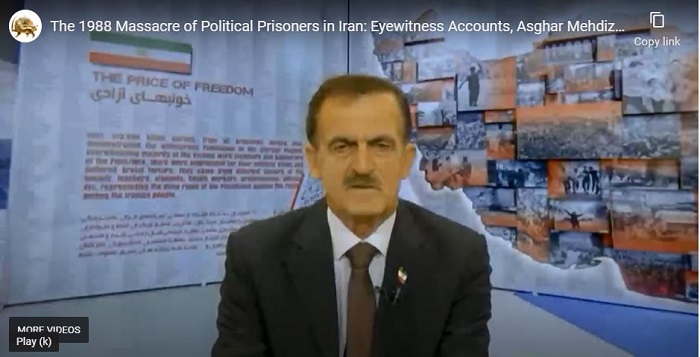
I was in Gohardasht from that date until the massacres of political prisoners in 1988.
The authorities had already paved the way to massacre all the prisoners defending the Mojahedin-e-Khalq, MEK, and their causes. One day, Mortazavi came into the ward, and the prisoners asked him to resolve a series of issues and problems.
In response to the prisoners’ demand, Mortazavi said:
“Because you do not cooperate with us and you are steadfast in your position as MEK, we have nothing to do with your ward anymore.”
“Your ward is on the prohibited list until we have the opportunity to deal with you all.” He added.
He did not come to our ward afterward and didn’t provide us with any facilities. We always had a disagreement concerning our exercise and the number of people who take part. Whenever we were collectively doing our daily exercise, this very person, Abbasi or so-called Hamid Nouri, used to order the prison guards to take us to solitary confinement, and after few days of beating and torturing us, we were then returned to our wards.
On two occasions, they took us to the gas room just because we were doing our exercise together. They then formed a tunnel shape, forming a line on both sides, involving Naserian, Davood Lashkari, and Hamid Abbasi along with some other Guards torturing us with sticks, cables, and other tools.
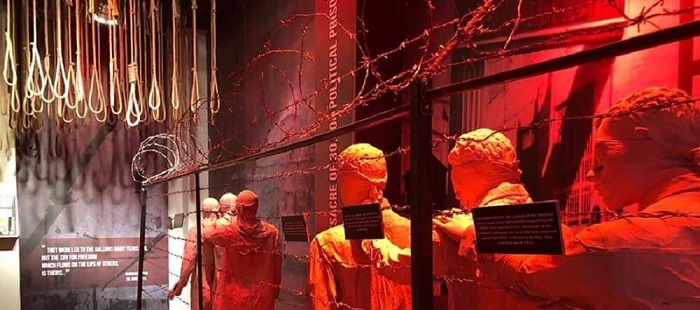
In the following days, I was told by Nasserian and Nouri that when you claim that you are MEK, you shouldn’t waiver. We shall deal with you in due course.
One day, Davood Lashkari, Faraj, and Hamid Nouri, who were all armed, gathered us and said “you who say that you are from MEK and do your mass prayers along with other things, whenever Khomeini issues his orders, we will line you along the wall and shoot you.”
It was Wednesday, August 26, when we had just finished our break in the prison yard; a guard came and called us to put our blindfolds on and come out. One of the guards led us to this very Hamid Nouri and started asking our name, the conviction and etc.…
We realized that his attitude was very different compared to the past. Whenever he used to ask us about the convictions, and we said that we were either the members or sympathizers of the MEK, he used to start insulting, using foul language and beat us, but this time his attitude had changed a lot. When we returned to the ward, we talked about this incident. It was a question for us why he treated us this way. Considering his attitude, we noticed something had changed compared to the past. We used to have a 14inch TV set in our ward, but it was removed by a prison guard. The next day, which was Friday, Javad Shaitan was also lingering in the area during our break time. He was holding a radio, and he was also armed. He checked all over the area. I noticed this as a new factor that did not correlate with the previous situations.

It was Saturday, August 29, which was visiting time. We noticed nobody came to visit us. Gholam went to find out. He returned and said to us that “you have no visitors.” It was also the day to go shopping in the store. We had to provide the list of items we needed. We approached a prison guard to deliver our list. He said you couldn’t do your shopping either.
It was after 10 am that they came and took Alireza Ghazanfarpour Mughadam, who was from Karaj. He had been tried in Karaj. After half an hour, they came after Seyyed Mohammad Morevvej and took him away. It was around 12:30 noontime; through a small hole in the window, we were peeping outside. We saw that Dawood Lashkari was taking five blindfolded prisoners towards the yard. They were taken and stopped close to the lavatory. They then began doing ablution. They were giggling; on their way back, they stood in front of the wall. One of them was Mahshid Razaghi, who was tall. He punched into the wall with his fist. The prison guards then opened the yard gate and took him to the other side of the asphalted road, where there was a warehouse with a red gate. Prisoners were taken there.
It was very strange for us, and we were very curious. After an hour, we saw that about 20 guards came out of this warehouse. From that little hole in the ventilator, I saw that Khaki, Ali Bidandan, Abbasi, Lashkari, and others were busy talking…
Khaki and Ali Bidandan, were wearing T-shirts, and it was clear that they were sweating. When they came into the guards’ room, they were talking to each other, saying how courageous the prisoners were, and kept chanting slogans before their execution. Ali Bidandan and Abbasi were saying that these guys are hypocrites (Monafeq), they are evil, and should all be killed.

We then found out that the situation is far different from the past. The executions had already started. Until the evening of the same day, we saw about 20 prisoners, some of whom we knew, including Jafar Hashemi and Mahshid Razaghi. They were taken from there and executed in the same warehouse. In the evening, they brought an Ambulance and loaded the corpses, and drove away. At night we sat down and talked. Gholamreza Hassanpour was my superior. He said that the situation had changed, but nevertheless, we will go to court and defend our cause accordingly.
The next morning, the guard corps member, Lashkari, entered the ward ordered everyone to put the blindfold on and come out with all their belongings. We got ready to go out. I supervised the logistics. They had set up a line outside, and whoever wanted to pass them through, they asked his conviction and then began beating everyone.
On one occasion, I witnessed that Mohsen Kariminejad, who was an engineering student, when they asked what his conviction was? He loudly replied, “the Mojahedin Khalq Organization of Iran”. He was separated from the rest and taken to the so-called court.
In a number of times when they were transferring their belongings, they were being kept asking what their conviction was and kept beating them up. We were then taken to the opposite section (sub-section 7) where Dr. Farzin, Gholam, Massoud Hasto told us to start cleaning because our first task was to clean each sub-section we entered.
Some halves an hour after we started cleaning, Dawood Lashkari came to our section and once he opened the door, he came across a corridor full of water. He became angry and asked, “Why did you pour so much water? All of you gather in the big hall. Once we went there, he came and started asking questions such as what is your name, the length of sentence you have received, and what was the conviction? When he came face to face with Massoud Hasto, he said to him, “you were saying that you were a supporter and member of the People’s Mojahedin, and now what do you have to say? He was very angry and resentful towards Massoud Hasto because every time he went to visit his mother and grandmother, he used to bring some news and as a result, he was beaten by Davood Lashkari, Hamid Abbasi, and Naserian.

They took us out and handed us over to Abbasi. We then went to the court’s corridor where the death committee was stationed there. They gave us a piece of paper and took us into a room where we filled in the form, and then we came and sat in the corridor. On this day I was there until late at night. That night, the same person, Hamid Abbasi lined us up and took us under ward 2, which was solitary confinement. He pushed us into solitary confinement. I started doing morse code with the adjacent cell. I noticed it was Dr. Farzin, who replied by telling me the story of going to the death room. In the middle of doing the morse code, it was Abbasi who opened the door and saw me. He began insulting me and took me to the opposite cell.
While in the new cell, I communicated with the next cell and I noticed that it was Massoud Hasto. We talked and told each other the story of the death committee.
The next morning, which was Monday the 10th, Hamid Abbasi came and shouted: “All of you, put the blindfold on and come out.” We put the blindfold on and came out. He lined us up and asked everyone for their names, details, the length of their sentence, and the charges. Whoever said he was a supporter of the MEK, Hamid Abbasi would line them up and take them to the death committee. There was such mayhem that day. Prisoners were brought in from everywhere. I was sitting in the main corridor, whoever was brought in, I tried to tell them as much as I could that we witnessed the executions on Saturday. There were 15 groups of prisoners who were in batches of 10 to 15 people each who were taken to the death corridor. We did not know where they were being taken. A list of names and the people were handed over to Nasserian by Abbasi, who lined them up and then led them along with some other guards to the death committee.

I was there that day until 8 or 8:30, then taken to the same cell again. This saga continued for several days. On Saturday the 15th, the number of executions intensified. I saw very glorious scenes in terms of resistance and endurance. For example, Bayat, the head of the health department, fetched Nasser Mansouri from the health clinic. He was on a stretcher. Since he had been put in solitary confinement, in protest, he jumped out from a window on the third floor, and as a result, he became paralyzed. I thought that perhaps they might take him to the hospital for treatment, but I saw him being taken to the same death room. It did not take more than a minute or two. I saw him being returned and made him sit on the left-hand side of the corridor.
I was thinking about how they were going to carry out the execution. I didn’t know him, but others later said it was the heroic Nasser Mansouri. Or Mohammad Mamooli, who was taken to solitary confinement a few months ago because of his organizational affiliation. He had lost one of his legs. He was also taken to be executed. In these corridors, I witnessed the execution of many, and I met several of them, including Hadi Mohammad Nejad. Four members of his family had been martyred. In their last visits, his family had told him, “dear Hadi do something so that they wouldn’t execute you.” Hadi had replied that “I will try and will do my best because I want to live, but although I love life, I do not want to betray my ideals and goals and become like the Tudeh Party, whom the people despise.
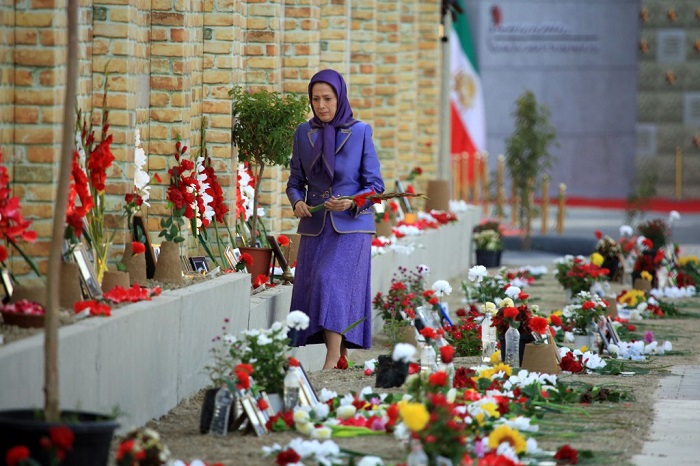
On Saturday, he named most of the MEK members, including Jafar Khosravi, Hamidreza Hemmati and Qudrat Nouri, and several other MEK who were taken to be executed. It was at this time that Nasserian, who was after someone, came and asked Khairullah to rise up and said: “What were you doing, evil hypocrite? What were you saying? What were you leading the others too?”
He was handed over to another guard and taken to the Death Committee and then for execution. There and then, Nasserian called me and, after swearing at me, said: “You wouldn’t say anything, you cannot talk, what were you saying” and he continued humiliating me.
They then took us back to the same corridor of death. I was in the same corridors of death until 8 or 8:30, then I was taken to solitary confinement. It was on Monday afternoon when I heard the cell door opening; each prisoner was brought out and was dealt with. When they opened my cell door, I saw Naserian, Mostafa Pour-Mohammadi, Hamid Nouri, and a few other guards.
Naserian furiously started shouting, insulting, and swearing, saying, “Put your blindfold on and come out”. After consulting with each other, they formed a kind of court-martial for me. I was handed over to two guards and taken to the cell where I was before. When I entered the room, I saw that in the middle of the room was a small, wide tablecloth; the food on the plate had dried up and became rotten. It was clear that it was in the middle of lunchtime when the last person had been taken away. One had put his watch on the sacks; one had put his rosary; one had bid farewell, saying that we are now going. Convey our greetings to the organization and to Massoud.
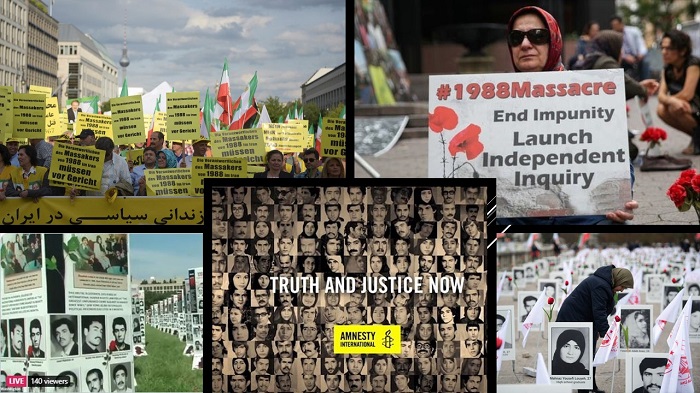
I heard that the sisters’ voices could be heard from downstairs. When I called the sisters, the guards quickly came in and insulted me and said, “Who were you calling?” They threw me in the bathroom and started beating me so that I fainted. When I became conscious, I dragged myself out. Next to my solitary cell, I saw the lights of few other cells were on. I called the first one through the window. He introduced himself. He was Hadi Mohammadnejad. I also told him my name. He said: “Asghar, they took me to the death hall. They raise the subject of interviews and intelligence cooperation; anyone who refuses would be executed the next day.
The next morning, two guards came after me and told me to get dressed. When I approached the death hall, I saw that there was a crowd of prisoners. They put us next to a prisoner. At one point, I asked the prisoner what was going on. He said, “Is it the first time you have come here? I said yes. He said, “Wait, they will take you first to show you the scene of the executions.” After a while, a guard came and said: you honeybees, rise. I saw 12 people got up and left while chanting slogans such as Long live MEK, O Hussein (referring to the grandson of Prophet Mohammad). As they were leaving, some others got up to go to the death hall. The guard shouted at them, saying that you are also overtaking each other for being executed. One of from the behind row replied: Yes, we do. Do you want to know why we overtake? The guard said, “Yes,” he said so long as you are not in our position, due to the fact that you are a guard corps member and we are MEK, you will never ever comprehend it anyhow.”
On this day I was witnessing new phenomena where all the MEK were standing tall and defending their ideals. Death was nothing to them, and they made a mockery of death. I was also gaining my spirit. Until they took several people, then the guard who had brought me called me and took me into the death hall. I did peep from my blindfold and saw many corpses in front of a stage there. I was kept some distance away from the stage, then uncovered my blindfold. I fainted. I said to myself, God, what is going on here? I saw that 12 MEK each were standing on a chair with a rope around their necks. While I was watching, the yelling of “Death to Khomeini, long live Rajavi, long live freedom” overwhelmed the area.
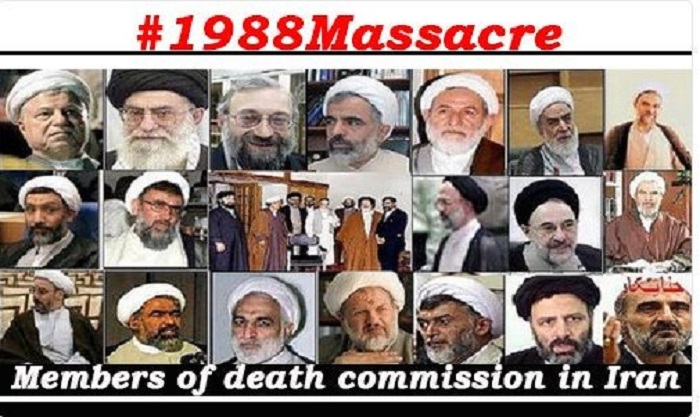
I witnessed that next to them were other bodies of the martyrs whose feet were grabbed by the guards and dragged out of the hall. When they were chanting slogans, the guards were bewildered. One of them, named Nasserian turned to Lashkari and Hamid Nouri and the guards shouting at them: “Why are you standing there? They are evil. They are hypocrites.”
After saying these words, he went towards those standing on the chairs with Nouri and Davood Lashkari and started kicking at the chairs under their feet. They kicked, and the prisoners were dropped hanging from the rope. After they kicked the fourth chair and removed the fourth person’s feet, the Mojahedin shouted louder and said, “hail to MEK, Allah Akbar”. It was at this point that I could no longer bear what I was witnessing. I did not understand anything anymore and fainted. After a while, I sensed that a guard was pouring some water on me. When I opened my eyes, I saw that the bodies were lingering on the ropes. They had already passed away.
The guard blindfolded me and brought me back to the same place where I was. I had already lost my psychological balance, and I was no longer the same person as Asghar. After the executions, we were brought back to Ward 13. We saw that a small number of MEK prisoners had remained. All of them had kept their promises and adhered to their aspirations. We were next in line to be executed. Nasserian and this very person, Hamid Nouri came to ward 13 and threatened us to say that the executions are still going on and should you continue to carry on supporting the organization, don’t imagine that we will not execute. We have some infiltrators among you, and we are in full control of everything.
MEK Iran (follow us on Twitter and Facebook)
and People’s Mojahedin Organization of Iran – MEK IRAN – YouTube


